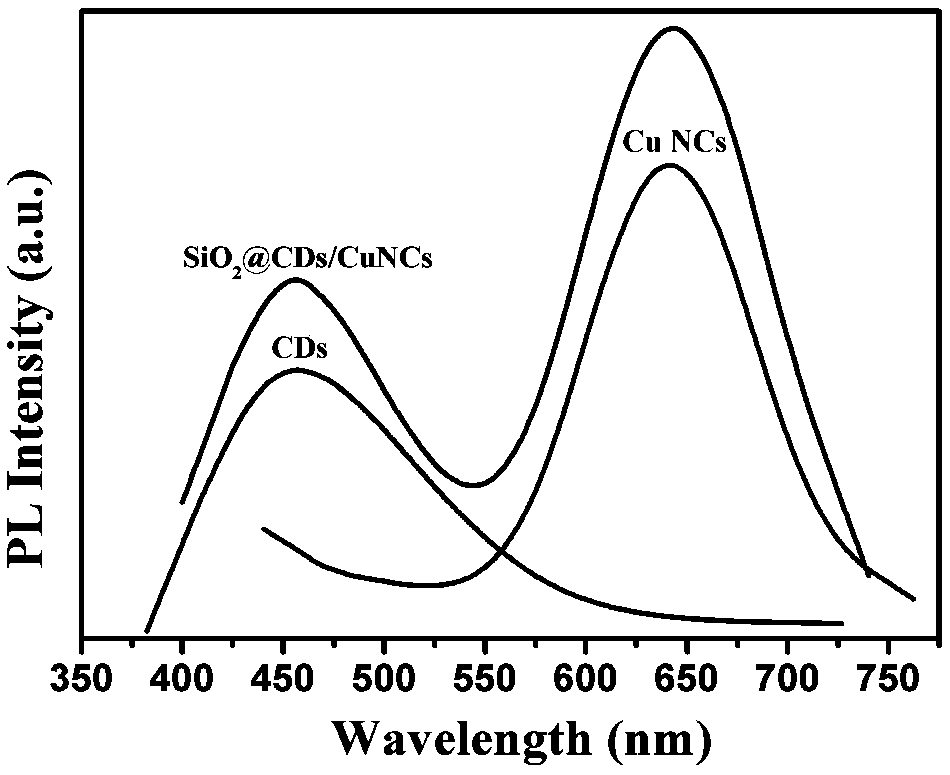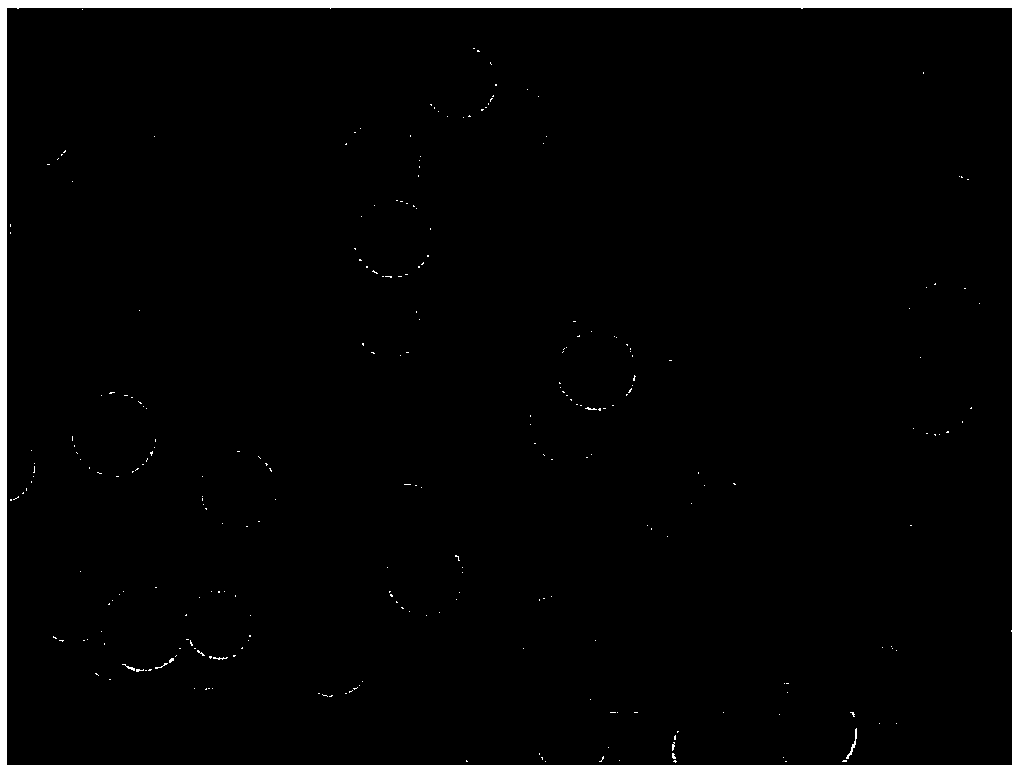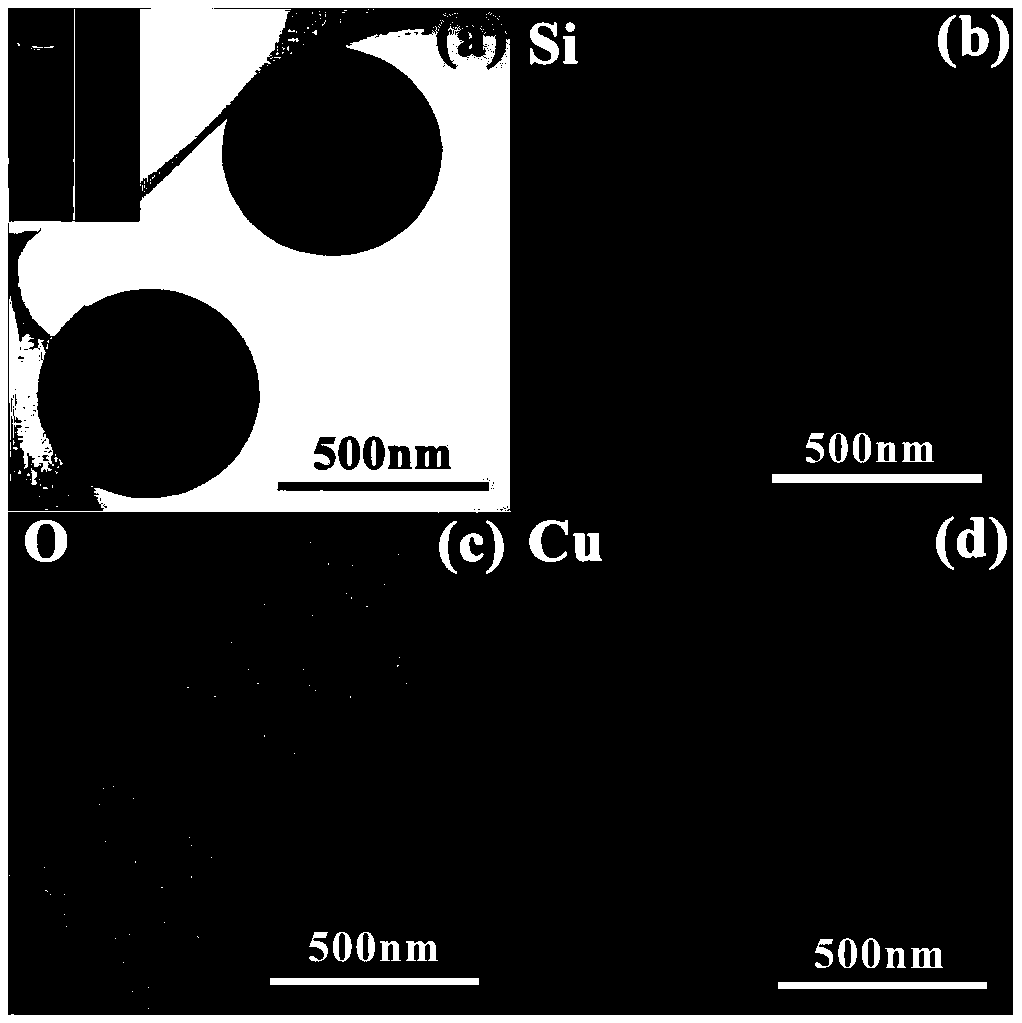Preparation method of dual-emission colorimetric fluorescence nano-microsphere and application of nano-microsphere in bacterial detection
A fluorescent nanometer and nanometer microsphere technology, applied in the field of colorimetric sensing, can solve problems such as influence, and achieve the effects of cheap raw materials, simple method, and easy industrial production.
- Summary
- Abstract
- Description
- Claims
- Application Information
AI Technical Summary
Problems solved by technology
Method used
Image
Examples
Embodiment 1
[0025] (1) The specific synthesis method of blue fluorescent carbon dots (CDs) is as follows: 1.0507 g of citric acid and 335 μL of ethylenediamine were dissolved in 10 mL of deionized water. Then the mixed solution was added into a Teflon reactor, heated to 200° C. for 5 hours, and naturally cooled to room temperature after the reaction. The obtained product is a brown-black transparent solution, which is then treated by dialysis to remove unreacted small molecules, and finally obtains a yellow aqueous solution of carbon quantum dots. After freeze-drying, a purified light yellow CDs powder is obtained, which is dispersed in deionized water to prepare a concentration of 10mg / mL CDs solution, and store at 4°C in the dark for future use.
[0026] (2), blue fluorescent SiO 2 Preparation of @CDs: First, add 5mL of the CDs solution obtained in step (1) into a 1000mL reaction flask, add 1.5mL tetraethyl orthosilicate (TEOS), 13mL ammonia water and 150mL ethanol, mix well, blow in n...
Embodiment 2
[0032] (1) The specific synthesis method of blue fluorescent carbon dots (CDs) is as follows: 0.9006 g of lactic acid and 300 μL of urea were dissolved in 8 mL of deionized water. Then the mixed solution was added into a Teflon reactor, heated to 200°C for 6 hours, and cooled to room temperature naturally after the reaction. The obtained product is a brown-black transparent solution, and then treated by dialysis to remove unreacted small molecules, and finally obtain a yellow aqueous solution of carbon quantum dots, obtain purified light yellow CDs powder after freeze-drying, and disperse it in deionized water to prepare a concentration of 10 mg / mL CDs solution, and store at 4°C in the dark for future use.
[0033] (2), blue fluorescent SiO 2 Preparation of @CDs: First, add 10mL of the CDs solution obtained in step (1) into a 1000mL reaction flask, add 1mL tetraethyl orthosilicate (TEOS), 12mL triethylamine and 125mL methanol, mix well, and blow in nitrogen, The mixed soluti...
Embodiment 3
[0039] (1) The specific synthesis method of blue fluorescent carbon dots (CDs) is as follows: 1.0977 g of terephthalic acid and 350 μL of arginine were dissolved in 12 mL of deionized water. Then the mixed solution was added into a Teflon reactor, heated to 180° C. for 8 hours, and naturally cooled to room temperature after the reaction. The obtained product is a brown-black transparent solution, which is then treated by dialysis to remove unreacted small molecules, and finally obtains a yellow aqueous solution of carbon quantum dots. After freeze-drying, a purified light yellow CDs powder is obtained, which is dispersed in deionized water to prepare a concentration of 10mg / mL CDs solution, and store at 4°C in the dark for future use.
[0040] (2), blue fluorescent SiO 2 Preparation of @CDs: First, add 8mL of the CDs solution obtained in step (1) into a 1000mL reaction flask, add 1mL tetraethyl orthosilicate (TEOS), mix 10mL ammonia water and 120mL isopropanol, and blow in ni...
PUM
| Property | Measurement | Unit |
|---|---|---|
| Particle size | aaaaa | aaaaa |
Abstract
Description
Claims
Application Information
 Login to View More
Login to View More - R&D
- Intellectual Property
- Life Sciences
- Materials
- Tech Scout
- Unparalleled Data Quality
- Higher Quality Content
- 60% Fewer Hallucinations
Browse by: Latest US Patents, China's latest patents, Technical Efficacy Thesaurus, Application Domain, Technology Topic, Popular Technical Reports.
© 2025 PatSnap. All rights reserved.Legal|Privacy policy|Modern Slavery Act Transparency Statement|Sitemap|About US| Contact US: help@patsnap.com



